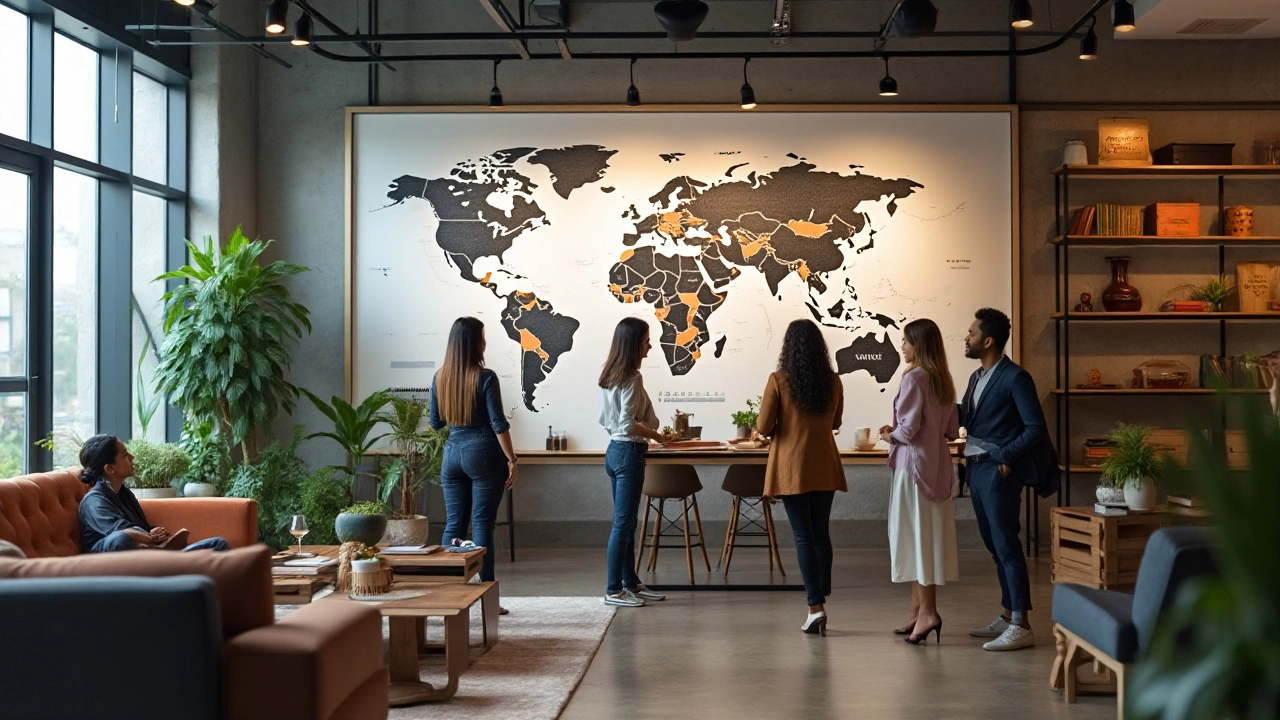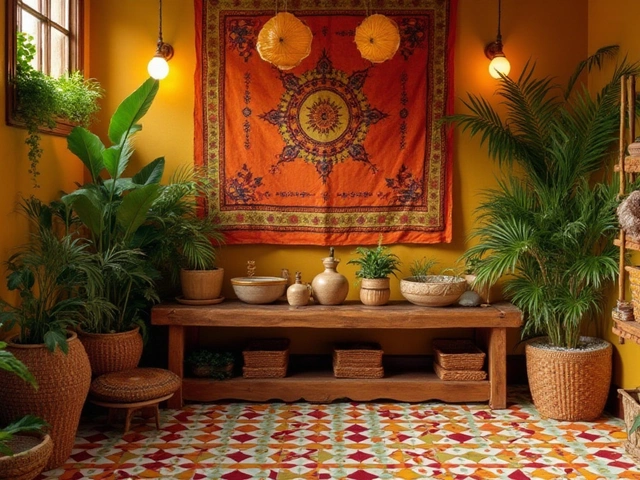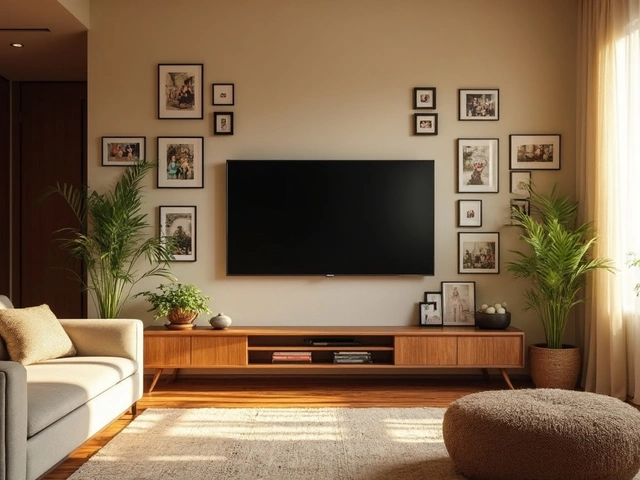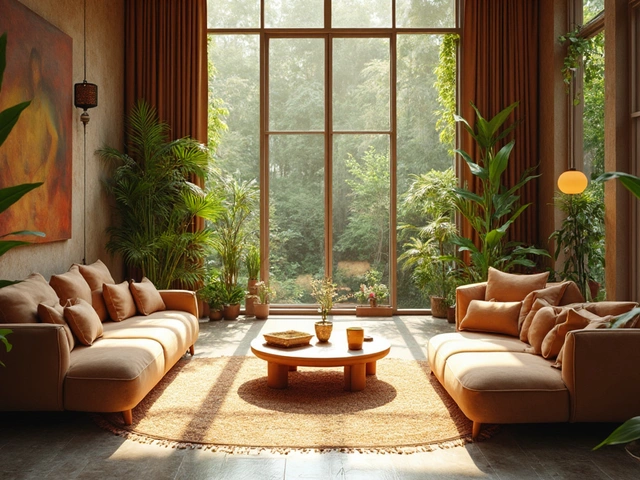In the realm of interior design, talent can turn ordinary spaces into extraordinary experiences. Yet, the pay landscape for these creative mavens isn't the same everywhere. Curious about where interior designers are earning top dollar? You're not alone. Whether it's due to a vibrant economy, a burgeoning design culture, or a high demand for aesthetically pleasing interiors, some nations stand out as lucrative hubs. Let's embark on a journey to uncover these destinations.
Several factors determine where interior designers can expect to earn comfortably—or even extravagantly. From the influence of local culture and the scale of construction projects to economic health and design trends, many elements come into play. For seasoned designers and rookies alike, it's fascinating to see how these dynamics shape career prospects.
- Countries with Highest Designer Salaries
- Factors Influencing Earnings
- Cultural and Economic Impacts
- Tips for Aspiring High-Earning Interior Designers
Countries with Highest Designer Salaries
When it comes to interior designers' salary, a handful of countries consistently lead the pack due to their thriving economies and rich cultures that place a high value on design aesthetics. The United States often tops this list, driven by the robust construction and home renovation industries. Interior designers in urban hubs like New York City and Los Angeles can command lucrative wages thanks to the demand for unique and cutting-edge spaces that mirror the eclectic styles of these metropolises. Additionally, the presence of numerous high-end design firms and an affluent client base eager to transform their living and working environments contribute significantly to high earnings. On the shoulders of this bustling industry, professionals can expand their portfolios while securing substantial financial rewards.
Across the Atlantic, the United Kingdom is another hotspot where interior designers can thrive financially. London, in particular, offers an exciting arena for designers, who are often hired by clients seeking to maintain historical elegance while incorporating modern elements into their homes or establishments. This blend of tradition and contemporary aesthetics requires a sophisticated touch, which justifies the higher paychecks. The competitive nature of the market encourages designers to continually innovate, making it a fertile ground for the ambitious. Moreover, with organizations like the British Institute of Interior Design providing support and guidance, the country is a nurturing environment for emerging talent aiming to make their mark in the industry.
Venturing further east, the United Arab Emirates, with cities like Dubai and Abu Dhabi, is renowned for its grand architectural projects and luxury developments. The fast-paced growth and the desire for opulence have positioned the UAE as a lucrative destination for interior designers. High-net-worth individuals invest in lavish interiors to match their lifestyles, often seeking bespoke solutions that demand high expertise and creativity. The tax-free income environment is another attractive part of the package, allowing designers to maximize their earnings and enjoy a higher quality of life. These conditions create a win-win situation for professionals looking to immerse themselves in projects that redefine luxury living.
In Asia, Japan stands out, blending tradition with modernity in a way that's both subtle and profound. Japanese interior design is characterized by minimalism and the art of balance, which resonates strongly with global trends. Designers in Tokyo can find themselves at the forefront of innovation, crafting spaces that reflect Japan's unique blend of culture and technology. The intricate nature of their work, combined with a local appreciation for meticulous craftsmanship, assures substantial financial remuneration. It's a realm where talent doesn't just get recognized, but gets rewarded handsomely, compelling designers from around the world to bring their expertise here.
Finally, Australia deserves mention for its lucrative interior design scene, buoyed by a housing market that prioritizes green building practices and sustainable design. Major cities like Sydney and Melbourne are on the cutting edge of eco-conscious design trends, leading to heightened demand for seasoned professionals. The country's commitment to environmental sustainability has cultivated a demand for designs that blend functionality with ecological responsibility. Designers who can effectively bring this vision to life often find themselves enjoying not only high salaries but also a reputation that opens doors to prestigious projects.

Factors Influencing Earnings
When it comes to understanding why some interior designers make more money in certain regions, we need to dive deep into an array of influencing factors. One of the primary considerations is the region's economic health. In countries enjoying robust economic growth, there's often a corresponding surge in demand for new buildings, office spaces, and residential properties. This naturally leads to an increased need for talented designers capable of transforming blank canvases into works of art. In such environments, skilled designers can command higher fees, leading to increased earnings.
Another vital aspect is the cultural appreciation for design and aesthetics. In places where there's a profound respect for art and style, interior designers are not only in demand but are also revered for their ability to blend functionality with artistic expression. Take, for instance, Italy—steeped in rich design heritage thanks to influential names like Leonardo da Vinci and Michelangelo. Here, designers enjoy a market that values craftsmanship, which translates into lucrative earnings. Additionally, urbanization trends play a significant role. As cities expand, the need for well-planned living spaces grows, creating exciting opportunities for high salary brackets.
The prevalence of design-centric industries can also sway earnings significantly. Cities or countries home to a booming fashion or entertainment sector often have formidable demand for uniquely crafted interior spaces—think bespoke designs for luxury retail stores or extravagant film sets. In turn, interior designers in these locales can expect attractive remuneration packages. An interesting point to consider is how technological advances influence earnings. With digital tools and software evolving, designers capable of utilizing these technologies enhance their appeal, often resulting in better-paying gigs.
Interestingly, some regions also experience stark disparities in interior designers' salary due to the public versus private sector divide. In certain countries, government or public sector projects might offer modest compensation, whereas private clients, especially those seeking bespoke luxury solutions, could be willing to pay a premium. Here's a thought from a notable industry leader, Philippe Starck, who once said:
"Good design is not just about making things pretty, but making things possible."This resonates highly with how design meets necessity, especially in areas with high development index where designers are pivotal in innovative urban planning.
A robust network can also amplify an interior designer’s earning potential. Building relationships with architects, contractors, and real estate developers can see designers being preferentially selected for high-profile jobs. Moreover, ongoing professional development can't be understated. The field is ever-evolving, and those willing to invest in learning new design trends or technologies can often translate their newfound knowledge into financial gain. A close look at these factors paints a comprehensive picture of why, in certain countries, interior designers can achieve higher financial success compared to their peers in other parts of the world.

Cultural and Economic Impacts
Understanding the cultural and economic influences on interior designers salary paints a vivid picture of how these factors carve out the financial landscape for creative professionals. Begin with culture, which has a profound role in shaping interior design trends and, subsequently, how much designers earn. Countries with a rich history of architectural innovation, like Italy or Japan, often have a thriving market for interior design, leading to more opportunities and better pay. Here, designers don't just improve spaces; they infuse elements of cultural heritage into modern interiors, which can lead to exciting and high-paying projects.
On the economic front, a country's financial health directly impacts how well interior designers are compensated. In burgeoning economies where construction projects are abundant, the demand for skilled designers rises, leading to higher pay. For instance, in the United States and Switzerland, where economic stability and growth are prevalent, interior designers often find themselves earning significantly more compared to peers in regions with slower economic dynamics. A country's real estate market also influences earnings; booming properties mean more investment in interiors, translating to more work for designers.
Remarkably, some countries exhibit a blend of both cultural reverence and economic prosperity, creating an ideal environment for design professionals. In Qatar, for example, the marriage of traditional aesthetics with cutting-edge architecture has led to a meteoric rise in design-related professions. High-profile projects demand not only a creative eye but also a respect for cultural authenticity, making it an attractive locale for designers aiming for top-tier salaries. As noted by renowned architect Zaha Hadid, "Designers must resonate with the cultural fabric of their projects to truly excel."
Economic impacts also extend beyond mere salaries. The cost of living and taxation rates in a country heavily influence how much of that salary ultimately lands in the designer's pocket. In countries like Norway, while the nominal salary may be high, the cost of living can significantly taper net earnings. Alternatively, in places like UAE, tax-free zones can enhance the actual take-home pay of interior designers. Thus, it's wise for designers to weigh both the nominal salaries and the economic landscape of a country when considering relocation for career growth.
Additionally, globalization has blurred the boundaries of influence and income, thanks to advancement in technology and remote working capabilities. Designers today can work on projects across borders without relocating, allowing them to tap into high-paying markets regardless of their home country. This has opened new avenues and potential income streams for savvy designers, yet it remains crucial that they stay attuned to the cultural sensibilities of their clients' regions to maintain relevance and demand.
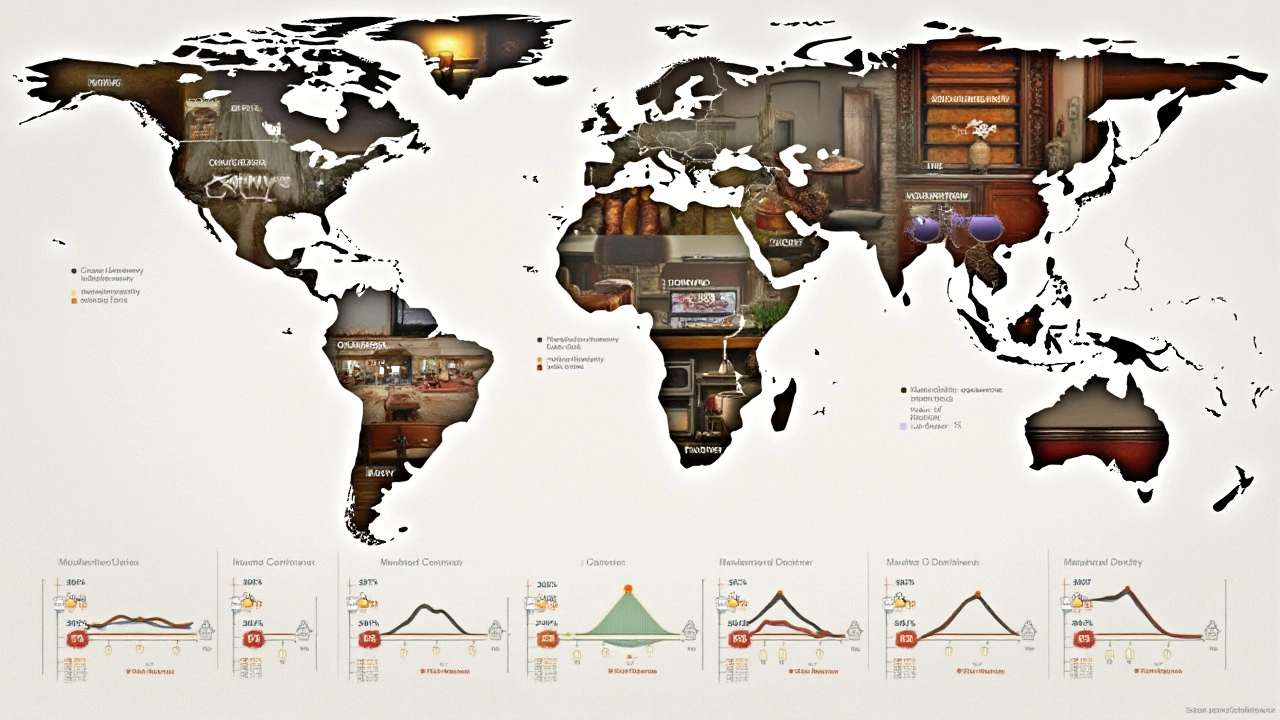
Tips for Aspiring High-Earning Interior Designers
Stepping into the world of interior design can be a thrilling adventure, filled with creativity and innovation. However, for those aiming to maximize their earnings, it takes more than just a keen eye for aesthetics. One crucial step is building a solid portfolio. A portfolio isn't just a collection of past work; it's your visual resume. Highlight projects that showcase diversity in style and expertise in design trends tailored to the affluent market. Clients who are willing to pay top dollar often look for designers with a proven track record in sophisticated and luxurious interiors. A consistently updated portfolio can open doors to high-paying opportunities across various regions.
Networking is another critical component for aspiring high-earners in this field. It's not just about who you know, but also about who knows you. Participate actively in industry events, pursue opportunities to collaborate or partner with other professionals, and engage in discussions within design communities. These relationships can lead to referrals or valuable advice on landing high-profile projects. It's often through these networks that one can learn about emerging trends and opportunities that are not advertised broadly. Successful networking is a skill that can elevate a designer's career significantly.
Many aspiring designers are now taking advantage of technological tools to boost their careers. Mastery in design software such as AutoCAD and SketchUp is foundational, but pushing the boundaries with augmented reality (AR) and virtual reality (VR) can really set one apart. These technologies offer clients immersive experiences, showcasing projects in a way that mere drawings can't. As demand grows for these advanced presentations, being proficient in these areas can lead to higher compensation. Educating oneself continuously in these tech areas can also be an attractive point to high-end clients who are often at the cutting edge of technology trends themselves.
"The best designers always blend timeless principles with the client's vision. They are storytellers, creating spaces that resonate," says acclaimed designer Kelly Hoppen.
Lastly, it's essential for designers to understand the business side of their craft. Strong negotiation skills are vital when discussing contracts and fees. Designers who are savvy about project management often end up handling larger, more lucrative projects. Understanding the financial aspects, such as budgeting and cost estimation, can impress clients who want assurance that their projects will be completed without hitches and on time. Additionally, seeking mentorship from experienced designers can provide insights not only on honing design skills but also on how to navigate contracts and client relations effectively.
Economic trends suggest that certain countries are seeing a greater demand in luxury interior design. A well-paid interior designer is typically one who understands these market dynamics and tailors their skills and marketing to meet these demands. With an ever-growing market in countries with high economic growth, designers who are flexible and willing to adapt to different cultures and design aesthetics could find themselves thriving financially. By staying informed about where these opportunities lie, designers can strategically position themselves to tap into these markets.
